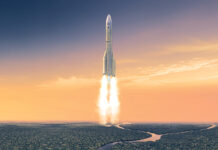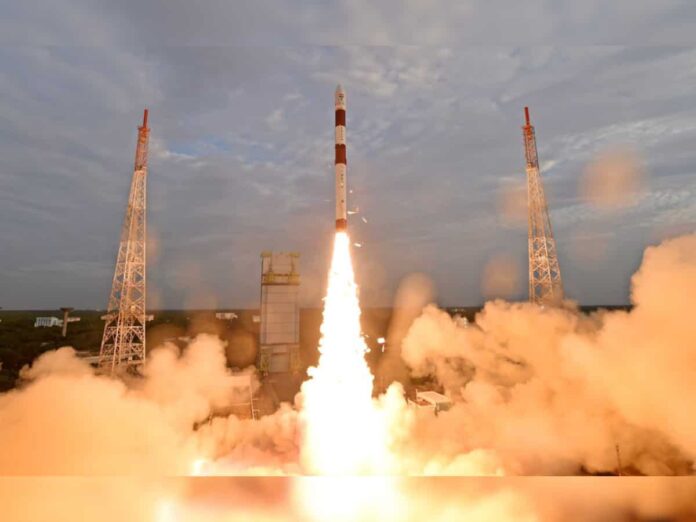The 360-kg satellite would be utilised to support the satellite imagery requirements of various agencies within the Government of Singapore after it was launched at an altitude of 535 km into a Near-equatorial Orbit (NEO).
Seven Singaporean satellites were successfully launched by ISRO’s tested PSLV rocket on Sunday from the Satish Dhawan Space Centre in Sriharikota, Andhra Pradesh, and placed in their appropriate orbits.
The primary satellite separated 23 minutes after takeoff, followed by six more co-passenger spacecraft that were subsequently launched into their designated orbits.
ISRO announced on Twitter that the PSLV-C56/DS-SAR Mission was a success after the satellites were successfully launched and separated. All seven satellites were successfully launched into their intended orbits by the PSLV-C56 rocket. Many thanks to Singapore and @NSIL_India for the deal. Following the eagerly anticipated Chandrayaan-3 launch earlier this month, the ISRO’s commercial subsidiary, NewSpace India Limited, is carrying out this mission.
The primary payload being carried by ISRO’s dependable workhorse Polar Satellite Launch Vehicle in today’s dedicated commercial mission is the DS-SAR Radar Imaging Earth Observation satellite, which was created in collaboration with ST Engineering, Singapore and DSTA (representing the Government of Singapore).
The 360-kg satellite would be utilised to support the satellite imagery requirements of various agencies within the Government of Singapore after it was launched at an altitude of 535 km into a Near-equatorial Orbit (NEO).
For their commercial clients, ST Engineering would employ the satellite to provide multi-modal, more responsive imaging and geospatial services.
The satellite is equipped with an Israeli company’s Synthetic Aperture Radar (SAR) payload. The payload enables DS-SAR to offer coverage in all conditions, day and night, and it is able to image at 1-meter resolution.
Following the completion of the 25-hour countdown that started on Saturday, the 44.4-meter-tall rocket majestically blasted off from the first launch pad at this spaceport at the predetermined time of 6.31 am, sending heavy fumes trailing behind it.
On the eastern coast, Sriharikota is situated about 135 km from Chennai.
The co-passenger satellites are: 1. VELOX-AM, a 23 kg microsatellite for technology demonstration; 2. The experimental satellite ARCADE Atmospheric Coupling and Dynamics Explorer 3. The 3U nanosatellite SCOOB-II, which is carrying a technology demonstrator payload, 4. The innovative 3U nanosatellite NULloN by NuSpace, which enables seamless Internet of Things connectivity in both urban and rural areas, 5. Galassia-2, a 3U nanosatellite that would be in low-Earth orbit, and 6. ORB-12 STRIDER, a satellite created through international cooperation, according to the space agency with headquarters in Bengaluru.
The 58th PSLV flight, during which the 17th vehicle with Core Alone Configuration is being used, took place today.
In contrast to other variants like PSLV-XL, QL, and DL which use six, four, or two boosters, respectively, a Core Alone version of the rocket would not use solid strap-on motors on its flanks in the first stage.
According to ISRO, PSLV has proven itself to be the “Workhorse of ISRO” by reliably placing a variety of satellites into low earth orbit.
After the eagerly anticipated Chandrayaan-3 mission, which launched on July 14 from the second launch pad at the Satish Dhawan Space Centre, this is the second campaign that ISRO will be launching.
The Chandrayaan-3 spacecraft is presently performing orbit-raising procedures. The Chandrayaan-3 spacecraft’s fifth orbit-raising manoeuvre, which was successfully completed on July 25, prepared the way for its anticipated August 1 departure from Earth’s orbit and approach to the Moon.
In order to service the clients in Singapore, the PSLV-C55/TeLEOS-2 mission was successfully launched in April.











































